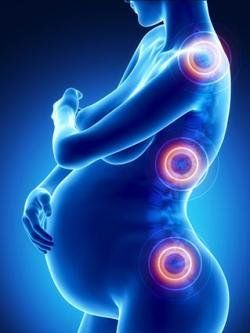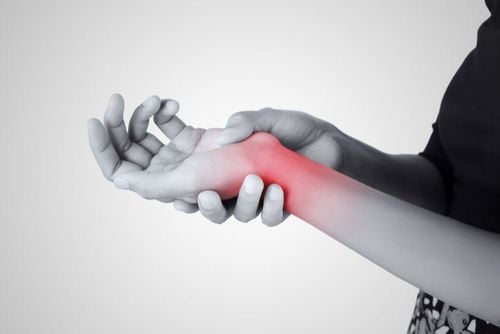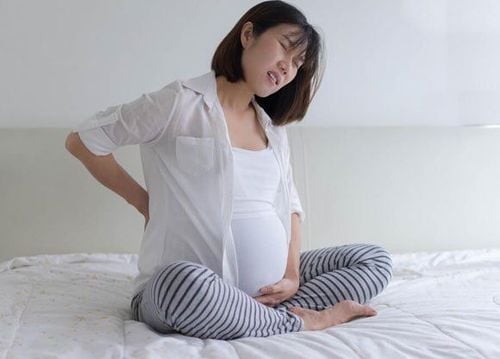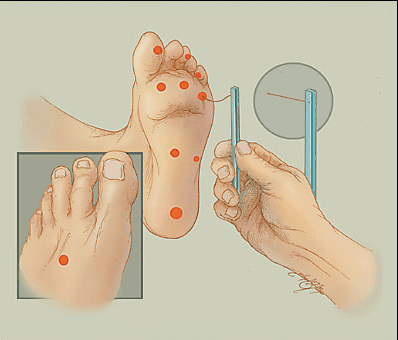This is an automatically translated article.
The article was written by Doctor Bui Hanh Tam - Department of Anesthesiology and Anesthesia - Vinmec Times City International HospitalPhysiological, metabolic, musculoskeletal, pelvic and abdominal wall changes in pregnant, childbirth and lactating mothers can lead to new and diverse types of pain that directly affect the process. pregnancy and postpartum.
1. Pain in pregnant and lactating women
Pregnancy sometimes aggravates existing pain such as back pain, joint pain by making existing damage to discs, joints, ligaments worse. Causes of pain not directly related to obstetrics are common, but managing chronic pain during pregnancy and lactation can be challenging. Pregnant mothers are often at risk of not paying attention to pain and not receiving proper pain treatment because they are very afraid of taking oral medications for fear of affecting the baby, so they often choose to live together. with pain.During 9 months of pregnancy, the mother's body miraculously changes to adapt to the growth of the baby. The change is not only in the outer appearance, but there is a profound change in the function and internal structure. Especially changes in weight, changes in physiology - fluids cause a significant pressure on the lumbar spine and pelvis.
Common pain-related problems in pregnant women are: Back pain, pelvic pain, low back pain, pubic joint pain, hand - wrist pain.

Phụ nữ mang thai có thể bị đau ở nhiều vùng trên cơ thể
2. Pain from stretching of the pubic joint
This is an uncommon condition, often occurring during and after pregnancy. If the pain intensity is high during pregnancy, the prognosis will be more severe after childbirth.Pubic joint dilation > 10mm often has symptoms of inflammation such as: swelling of the pubic joint, pain above the pubic joint, pain that may radiate down the leg or spread to the back.
The dilated pelvis will recover in a few weeks after giving birth. And most mothers recover from this symptom within a month with bed rest and common anti-inflammatory painkillers. Wearing a pelvic support belt during pregnancy, exercises to strengthen the pelvic floor muscles (Kegel exercises) will help relieve pubic pain. In addition, it is necessary to limit the movement of carrying, which puts pressure on the pelvic area to limit this situation.
If mothers have persistent and difficult-to-control pain after childbirth, it is necessary to see a doctor and see a doctor for pain treatment.
3. Carpal tunnel syndrome

Đau cổ tay trong thai kỳ thường xảy ra đặc biệt ở 3 tháng cuối
The pain in this case is due to compression of the median nerve caused by generalized edema. Manifested by symptoms: paresthesia, numbness, loss of sensation, ant sting.
During pregnancy and breastfeeding period, to limit the use of drugs, the use of anti-inflammatory drug injection into the carpal tunnel is a suitable option for pregnant mothers to resolve symptoms. After giving birth, over time, the symptoms will disappear when the edema subsides. If carpal tunnel syndrome persists, affecting daily activities and baby care, more intensive pain management techniques should be considered to reduce inflammation, edema, and release nerve compression. The middle is done by the doctor treating the pain.
4. Pelvic ring syndrome pain
Looseness of the long ligaments and pubic joints is caused by hormonal changes in progesterone and relaxin, which can cause pelvic girdle syndrome.Manifestation of this syndrome is pain like a horizontal constriction: the front and back are both sides of the pelvis. This syndrome affects one in five pregnant women. The sharp pain can spread to the back of the thigh, making it difficult for mothers to: Stand, walk and sit. Most of the time, iliac ring syndrome affects the sacrum while the function of the pelvic floor (i.e. the lower part of the pelvis) is not affected. Mothers who are overweight, obese and have their periods soon after giving birth are more likely to have this pain.
About 80% of pregnant women recover soon after 6 months, some recover completely later after 2 years.
Mothers with pelvic girdle syndrome often have a high risk of persistent pain during childbirth if the mother has an indication for a cesarean section. Therefore, after surgery, if the mother still has pain with the above symptoms, seeing the pain doctor to have an accurate diagnosis of the source of the pain and treating the right cause in a positive way will soon bring the mother to life. about a normal rhythm so that you can better take care of yourself and your baby.
5. Back pain

Đau lưng tương đối phổ biến ở phụ nữ có thai
Safe oral medication and intensive physical therapy exercises. Treating the origin of pain by selectively treating the nerves that control pain in muscles, joints and ligaments under the guidance of the most modern ultrasound machine today. If you have a need to treat pain in pregnant and lactating women, you can contact the hospitals and clinics of the Vinmec health system nationwide.
Please dial HOTLINE for more information or register for an appointment HERE. Download MyVinmec app to make appointments faster and to manage your bookings easily.
SEE ALSOWhy do women often have back pain during pregnancy? Why do pregnant women often have pelvic pain during pregnancy? Comprehensive benefits when choosing a package maternity service













